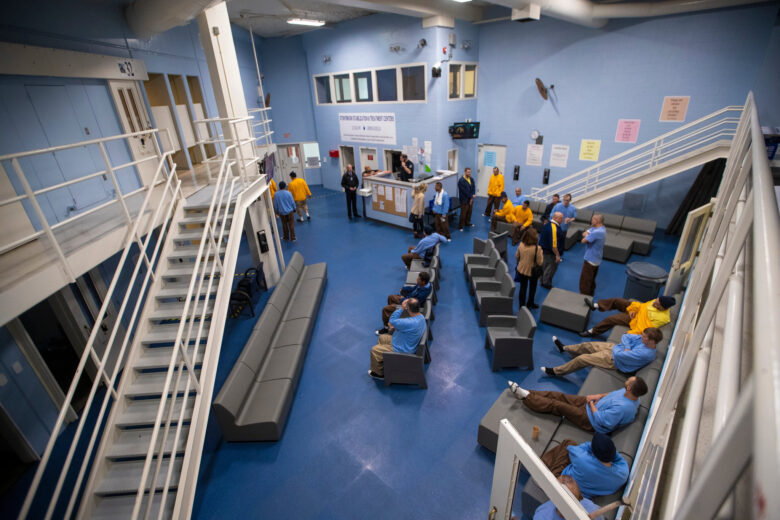Deciding you need rehab is a big step in the recovery process. Of course, not all treatment centers are created equally. Taking the time to find a community that meets certain criteria plays a big role in your success. To that end, here’s what to look for in a rehab facility.
Contents
Legitimacy
Accreditation, licensing and certifications help prove a center’s legitimacy and ability to meet minimum standards. For instance, if you are in Phoenix, you would want to find a JCAHO accredited treatment center in Arizona. JCAHO stands for The Joint Commission. Legitimate centers are accredited either by JCAHO or the Commission on Accreditation of Rehabilitation Facilities (CARF).
Accreditation by these groups ensures a facility meets performance standards and reaches a minimum level of results, quality, and value. Licensing and certifications by clinic staffers make sure that the staffers offering the rehab programming meet standards for training and experience as well. Some credentials to look for include Licensed Alcohol and Drug Counselor (LADC), Licensed Professional Counselor (LPC), and Certified Co-occurring Disorders Counselor (CCDP).

Source: nytimes.com
Multidisciplinary Approach
A multidisciplinary approach involves a team of professionals working together with you on customized treatments and therapies. It can be a red flag if the “team” is actually just two or three staff members serving different roles.
Common members of a team include a chemical dependency counselor, doctor, nurse, wellness specialist, and psychiatrist. Each team member should have the appropriate licenses for his or her field.
Different Levels of Care
Some people think the levels of care a rehab facility has doesn’t matter as long as it offers the specific type of care sought. For instance, if someone wants inpatient therapy, they might not care if a facility offers outpatient care, too.
In one respect, it does not matter. Taken from a broader perspective, though, it matters a great deal. For one thing, continuity of care is important. If you start with inpatient, you’re likely to progress to outpatient and treatment groups hosted by the facility. If it doesn’t offer these options, you may scramble to fill in some gaps. Likewise, if you need outpatient, what happens if you need inpatient later? It would be nice to go to a place where the people already know you.
Relapses are fairly common with rates ranging from 40 to 60 percent. People often need varying levels of treatment on their journey to sobriety.

Source: executive-rehab-guide.co.uk
Help With Comorbidities
Much of the time, drug or alcohol use does not exist in a vacuum. Users often have co-occurring issues such as depression or anxiety. It is not good when a facility zooms in only on drug use and ignores everything else.
Dual diagnosis care requires treatment for both the addiction and the mental health issue at the same time. On the off chance you cannot find a program in your area that helps with mental treatment, ask how the facility works with resources in the community to ensure you can get the mental health services you need.
When you evaluate treatment centers, look for those treating the whole person. This big-picture approach also includes family therapy and ongoing assistance with recovery.
Affordability
It can be uncomfortable to discuss finances with your loved ones and professionals at a rehab facility, but it is necessary. For one thing, you don’t want to spend every last cent you have on treatment because that could put you at a huge disadvantage when you leave and set back your recovery.
Fortunately, many facilities accept various types of insurance, including programs offered on the state and federal levels. A rehab center that might seem out of your reach at first glance may not be once you factor in insurance.
If you lack insurance or are underinsured, there are people at many facilities who can help you explore your options. Some uninsured or underinsured people are eligible for more coverage they did not know about.

Source: pssc.org.nz
Family and Community Support
The support of loved ones and the community give you the best chances of recovery. To this end, a rehab center would ideally involve your loved ones in counseling and other treatments since they are an important part of your life. They are poised to play key roles in your recovery. Similarly, a rehab center should have connections to community resources and give you strategies to find more. Recovery is a lifelong process, not something that begins and ends at a rehab center.
Lack of Red Flags
One red flag signaling you to steer clear of a treatment center would be if the facility proclaims something like, “100% success!” or “We cure addiction.” Different people, providers, and facilities define success differently, and nothing indicates addiction can be cured as easily as a treatment center might make it seem. If it was that simple, far fewer people would struggle with it. Other red flags include the following.
- Little clarity on how much professional counseling you would get
- Unclear criteria for admission/admittance
- A focus on personal restriction versus kindness and compassion
To expand on the second bullet point, if a facility does not have established admissions criteria, the environment could end up being too chaotic for you or even unsafe.

Source: thewatershed.com
As for personal restriction, some facilities may seem to go out of their way to deprive you by not letting you have private time or alone time. They limit your access to food and drink. Look for a rehab center that strives to give you access to amenities, healthy snacks, and water. They should give you some way of communicating with the outside world. For instance, maybe you can use your smartphone for an hour every day or every other day.
On the surface, the websites of most treatment centers may look similar. It can take some time and perhaps an email or phone call to tease out attributes such as the levels of care provided, whether centers accept your insurance, and if you can get support for comorbidities. The time you spend researching is worthwhile, though, since your health and well-being are at stake.
